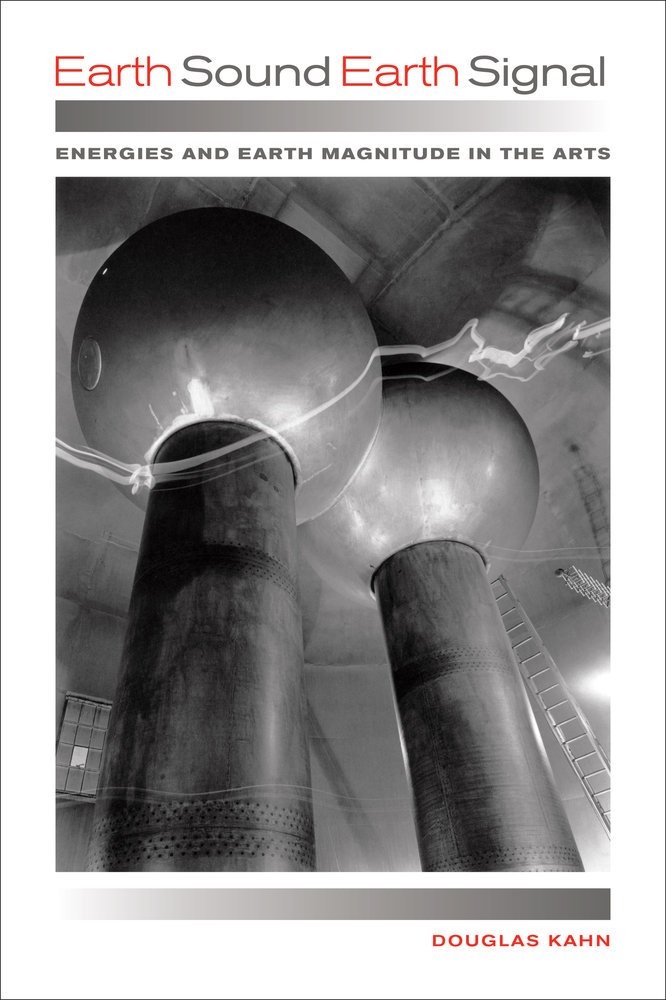Differences 22(2-3): The Sense of Sound (2011)
Filed under journal | Tags: · acoustics, cybernetics, hearing, noise, science, sound, sound studies, voice

“Sound has given rise to many rich theoretical reflections, but when compared to the study of images, the study of sound continues to be marginalized. How is the “sense” of sound constituted and elaborated linguistically, textually, technologically, phenomenologically, and geologically, as well as acoustically? How is sound grasped as an object? Considering sound both within and beyond the scope of the human senses, contributors from literature, film, music, philosophy, anthropology, media and communication, and science and technology studies address topics that range from Descartes’s resonant subject to the gendering of hearing physiology in the nineteenth century, Cold War politics and the opera Nixon in China, sounds from the Mediterranean, the poetics of signal processing, and the acousmatic voice in the age of MP3s. In the interpretive challenges posed by voice, noise, antinoise, whispering, near inaudibility, and silence and in the frequent noncoincidence of emission and reception, sound confronts us with what might be called its inhuman qualities—its irreducibility to meaning, to communication, to information, and even to recognition and identification.”
Contributors: Caroline Bassett, Eugenie Brinkema, Iain Chambers, Michel Chion, Rey Chow, Mladen Dolar, Veit Erlmann, Evan Johnson, Christopher Lee, Mara Mills, John Mowitt, Dominic Pettman, Tara Rodgers, Nicholas Seaver, James A. Steintrager, Jonathan Sterne.
Special double-issue of Differences: A Journal of Feminist Cultural Studies
Guest edited by Rey Chow and James A. Steintrager
Publisher Duke University Press
ISSN 1040-7391
314 pages
via -end-
Douglas Kahn: Earth Sound Earth Signal: Energies and Earth Magnitude in the Arts (2013)
Filed under book | Tags: · acoustics, art, art history, cold war, computer music, earth, electromagnetism, electronic music, energy, experimental music, geophysics, hearing, history of science, light, media history, music history, nature, noise, perception, radio, science, sound, sound art, sun, technology, telegraphy, telephone

“Earth Sound Earth Signal is a study of energies in aesthetics and the arts, from the birth of modern communications in the nineteenth century to the global transmissions of the present day. Douglas Kahn begins by evoking the Aeolian sphere music that Henry David Thoreau heard blowing along telegraph lines and the Aelectrosonic sounds of natural radio that Thomas Watson heard through the first telephone; he then traces the histories of science, media, music, and the arts to the 1960s and beyond. Earth Sound Earth Signal rethinks energy at a global scale, from brainwaves to outer space, through detailed discussions of musicians, artists and scientists such as Alvin Lucier, Edmond Dewan, Pauline Oliveros, John Cage, James Turrell, Robert Barry, Joyce Hinterding, and many others.”
Publisher University of California Press, 2013
ISBN 0520956834, 9780520956834
343 pages
Reviews: Alessandro Ludovico (Neural, 2013), Christopher Haworth (Organised Sound, 2015), Adam Trainer (Continuum, 2015).
PDF (removed on 2014-3-19 upon request of the publisher)
Comment (0)Luigi Russolo: The Art of Noises (1916–) [IT, EN, ES, DE, FR, RU]
Filed under book | Tags: · aesthetics, futurism, music, noise, sound

The slim volume of essays, presented here for the first time in English translation, is one of the significant documents of musical aesthetics of this century. If the book itself has remained the province of a mere handful of readers, its ideas, passed on through a variety of later musical and literary movements, became the inspiration for some of the most innovative artistic creations of modern times. Luigi Russolo anticipated-indeed, he may have precipitated-a whole range of musical and aesthetic notions that formed the basis of much of the avant-garde thought of the past several decades. His ideas were absorbed, modified, and eventually transmitted to later generations by a number of movements and individuals-among them the futurists, the Dadaists, and a number of composers and writers of the nineteen-twenties. The noise instruments he invented fascinated and infuriated his contemporaries, and he was among the earliest musicians to put the often-discussed microtone to regular practical use in Western music. Russolo’s views looked forward to the time when composers would exercise an absolute choice and control of the sounds that their music employed. He was the precursor of electronic music before electronics had come of age.
Italian edition
Publisher Edizione Futuriste di “Poesia”, Milan, 1916
92 pages
English edition
Translated, and With an Introduction by Barclay Brown
Publisher Pendragon Press, New York, 1987
Monographs in Musicology series, Vol. 6
ISBN 0918728576
87 pages
Russolo at UbuWeb (includes 2 CDs and an edition of the 1967 Robert Filliou’s translation of the manifesto)
Wikipedia (EN)
Publisher (EN)
L’Arte dei rumori (Italian, 1916)
The Art of Noises (English, trans. Barclay Brown, 1987, no OCR)
El arte de los ruidos. Manifiesto Futurista (Spanish, 1996, the manifesto only)
Die Geräuschkunst (German, trans. Justin Winkler and Albert Mayr, 1999)
L’Art des bruits. Manifeste futuriste (French, 4th Edition, 2003/2013, the manifesto only)
Искусство шумов (Russian, undated, the manifesto only)
See also:
The Noise Instruments of Luigi Russolo (Barclay Brown, 1981, 18 pp)
Luciano Chessa: Luigi Russolo, Futurist: Noise, Visual Arts, and the Occult (2012)

